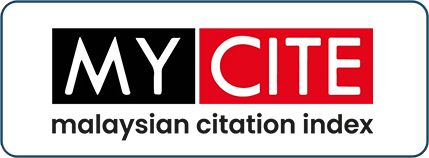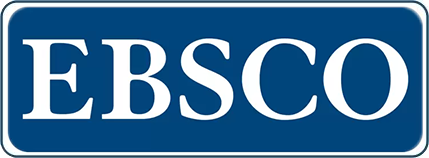Perspective Of Gravity Model Towards Halal Export: A Conceptual Study
DOI:
https://doi.org/10.33102/jfatwa.vol27no2-SE.483Keywords:
Halal export, Gross Domestic Product (GDP), Muslim population, Halal Certificate, DistanceAbstract
The first fundamental in Islam is that all things created by the almighty Allah s.w.t. are permissible or halal, except those that are explicitly prohibited in the Holy Quran or hadith. Another interesting concept closely connected with the halal concept is the safety and quality products and conducts better known as toyyiban. Hence, the halal concept should include toyyiban, or the better terms are Halalan Toyyiban, which can be translated as permissible and wholesomeness Meanwhile, the Halal industry is defined as an industry that produces and offer good quality products and services which under Sharia law. Sharia law is the law that governs Muslims' everyday conducts. The Halal industry includes sectors such as food, cosmetics, ingredients, pharmaceutical, chemicals, livestock, logistics, tourism, and most notably the Islamic finance and banking sector Halal exports are growing steadily while the performance is still very far from the targeted growth. Thus, an understanding of the determinants of Halal export flows is essential. This study aims to investigate the nexus between Gross Domestic Product (GDP), Muslim population, Halal Certificate, and distance of Halal export. The method employed in this study is the Qualitative method. Content analysis is formed to prove the relationship between those independent variables with Halal export. Limitations and future study recommendations were discussed at the end of this research.
Downloads
References
Abdullah, M. A., & Alias, S. (2019). Malaysia Model: Challenges in Halal Certification. Halal Journal– No.3/2019.
Ari, Y. O., & Sayar, R. (2020). Factors Affecting Turkey’s Fresh Fruit And Vegetable Exports: A Gravity Model Analysis. Sosyal Bilimler Araştırmaları Dergisi, (2020 Sonbahar Özel Sayı I/Ii), 83-89.
Azam, M. S. E., & Abdullah, M. A. (2020). Global halal industry: realities and opportunities. IJIBE (International Journal of Islamic Business Ethics), 5(1), 47-59.
Bakar, N. A. A., Abidin, I. S. Z., & Haseeb, M. (2015). Investigating exports performance between Malaysia and OIC member countries from 1997-2012. Asian Social Science, 11(7), 11.
Batra, A. (2004). India’s Trade Potential: The Gravity Model Approach, Working Paper No. 151, Indian Council for Research on International Economic Relations.
Bernama. (27 Sep 2021). 12MP: Halal industry to contribute 8.1 pct to GDP, RM56 bln export revenue in 2025. Retrieved at https://www.mida.gov.my/mida-news/12mp-halal-industry-to- contribute-8-1-pct-to-gdp-rm56-bln-export-revenue-in-2025/.
Bernama. (September 28, 2021). Halal industry to generate RM56b export revenue in 2025. Retrived at https://www.dailyexpress.com.my/news/178726/halal-industry-to-generate-rm56b-export- revenue-in-2025/.
DOSM. (19 Dec2017). EconomicCensus2016 – Halal Statistics. Retrived at
https://www.dosm.gov.my/v1/index.php?r=column/cone&menu_id=LzRkYXlmRElhQVF2c EdhNWZLSXVhdz09#.
Ismail, M., & Gencay, T. (2021). Gravity model: A bibliometric analysis and detailed overview. International Journal of Business and Society, 22(1), 365–381. https://doi.org/10.33736/ijbs.3183.2021
Karagoz, K., & Saray, M. O. (2022). Trade potential of Turkey with Asia-Pacific countries: Evidence from panel gravity model. International Economics Studies, 36(1), 19-26.
Lee, C. J., & Lee, S. T. (2020). An Analysis of the Behavior of Malaysian Consumers for Expanding the Export of Food and Agricultural Products. Journal of Korea Trade, 24(5), 55-70.
Masood, A., & Rahim, A. A. (2019). Halal Economy and Industrial Revolution 4.0: The New Frontier for Islamic Revival in Uzbekistan. Halal Journal- No.3/2019.
Masood, A., & Rahim, A. A. (2019). Halal Economy and Industrial Revolution 4.0: The New Frontier for Islamic Revival in Uzbekistan. Halal Journal.
Masron, T.A., Fujikawa, T. and Nik Azman, N.H. (2014). “Malaysian exports to Middle Eastern Asian countries: trends and the role of trade agreements”, Asian Academy of Management Journal, Vol. 19 No. 2, pp. 141-159.
Mazlan, A.I. and Hamzah, H.Z. (2015). “Malaysian halal export market: case study on developing countries”, Tenth Malaysian National Economic Conference (PERKEM), 2015 Universiti Kebangsaan Malaysia, Melaka, pp. 99-107.
Mujar, N. A. H., & Hassan, N. (2014). The Economics of Halal Industry. Skudai: Universiti Teknologi Malaysia.
Mustaffa, K. A. (2019). Developing Halalan Tayyiban Concept in Malaysia’s Food Industry. Halal Journal – No.3/2019.
Muyassaroh, N., Slamet, F., & Sakti, M. (2021). Potential of halal industry areas to improve national economic growth. In Halal Development: Trends, Opportunities and Challenges (pp. 75-80). Routledge.
Obashi, A. (2009). Stability of Production Networks in East Asia: Duration and Survival of Trade. Economic Research Institute for ASEAN and East Asia (ERIA), 22(1), 21–30. https://doi.org/10.1016/j.japwor.2009.06.002
Pratiwi, D. A., & Hendayani, R. (2021). Analysis of the Awareness Level of Indonesian Non-Muslim Consumers on Halal Products: A Case Study of Non-Muslim Consumers in Malang City. International Journal of Business and Technology Management, 3(2), 1-13.
Shahriar, S., Kea, S., Abdullahi, N. M., Rahman, R., & Islam, R. M. (2021). Determinants of Bangladesh’s Leather Exports to Its Major Trade Partners: A Panel Gravity Model Approach. Global Business Review, 09721509211036288.
Yunus, M. Y., Ghaffar, P. Z. A. A., & Kabir, S. (2020). Halal food export and Malaysia’s potential: the applicability of the gravity theory of trade. Journal of Islamic Marketing.
Yunus, M.M. and Ismail, M.A. (2009), “Malaysia-OIC trade: a gravity approach”, Fourth Malaysian National Economic Conference (PERKEM IV), Universiti Kebangsaan Malaysia, Kuantan, pp. 389-394.
Zainal Abidin, I.S.Z., Abu Bakar, N. and Sahlan, R. (2013), “The determinants of exports between Malaysia and the OIC member countries: a gravity model approach”, International Conference on Applied Economics (ICOAE) 2013, Springer, Istanbul, pp. 12-19.
Downloads
Published
Issue
Section
License
Copyright (c) 2022 Razinda Tasnim Abdul Rahim, Mohd Faizuddin Muhammad Zuki, Nur Syamilah Md Noor

This work is licensed under a Creative Commons Attribution 4.0 International License.
The copyright of this article will be vested to author(s) and granted the journal right of first publication with the work simultaneously licensed under the Creative Commons Attribution 4.0 International (CC BY 4.0) license, unless otherwise stated.















